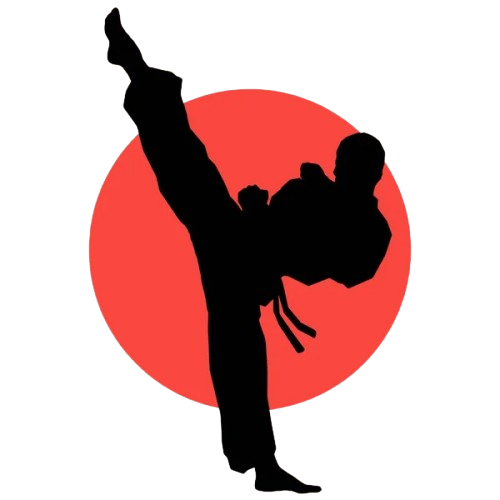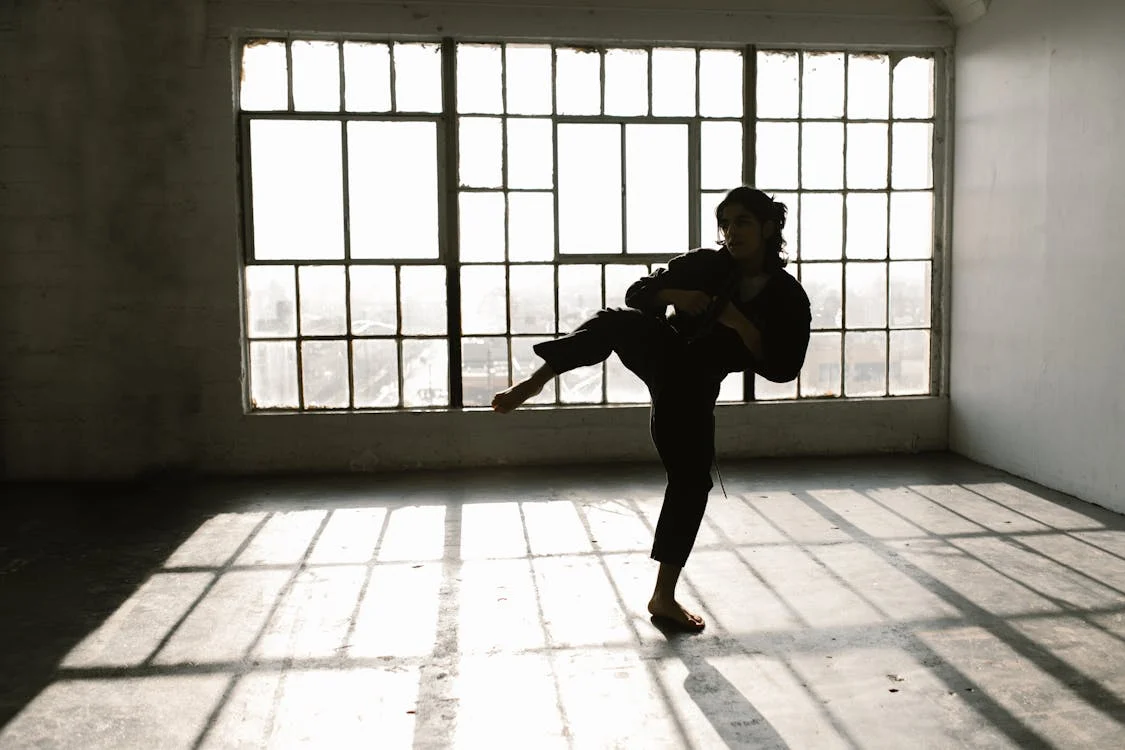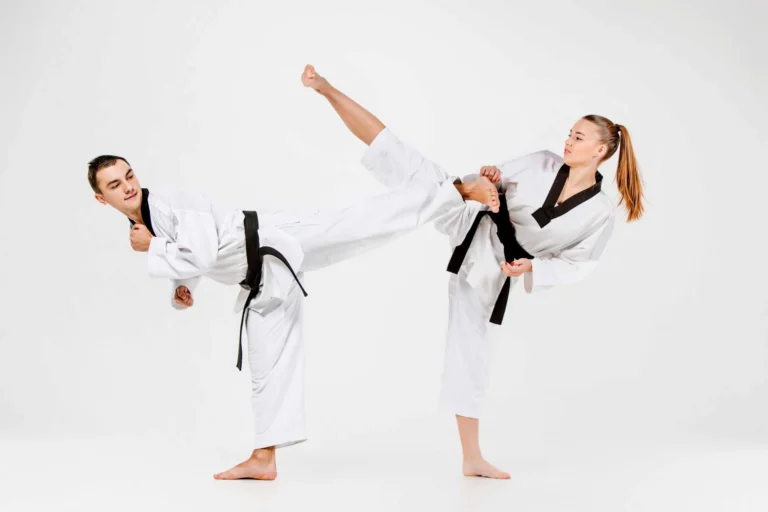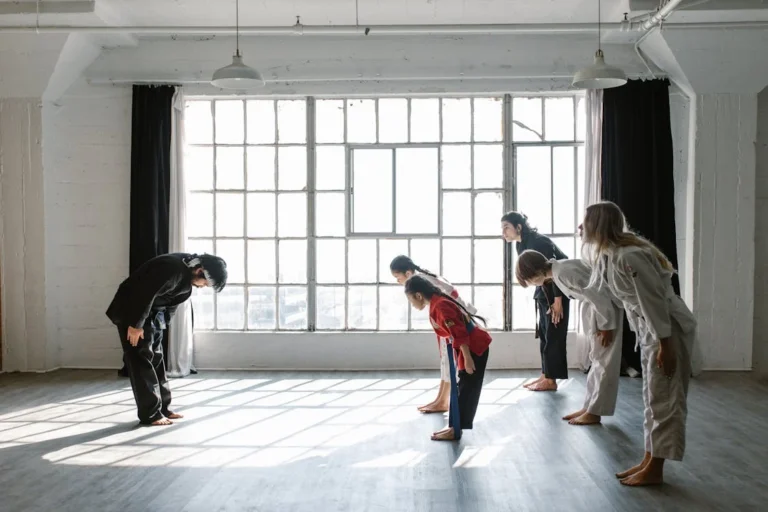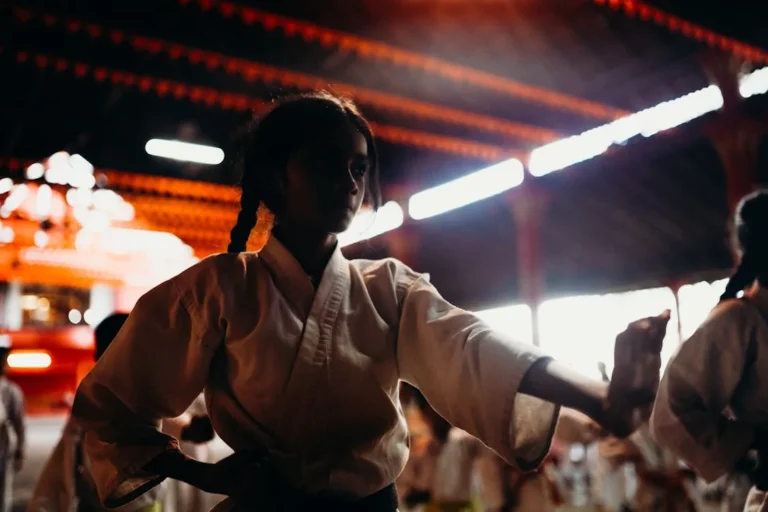Taekwondo for Beginners: A Complete Guide to Getting Started 🥋
Taekwondo is an exciting and dynamic martial art that focuses on powerful kicks, sharp strikes, and disciplined movements. Whether you want to learn self-defense, improve your fitness, or compete in tournaments, Taekwondo is a great way to build strength, confidence, and discipline.
If you’re new to Taekwondo, this guide will help you understand what to expect, basic techniques, training tips, and how to prepare for your journey. Let’s dive in!
🥋 What is Taekwondo?
Taekwondo is a Korean martial art known for its fast kicks, powerful strikes, and strategic movements. It emphasizes flexibility, speed, and mental discipline, making it one of the most practiced martial arts worldwide.
Key Features of Taekwondo:
✔ High kicks & fast footwork – Taekwondo is famous for its impressive kicking techniques.
✔ Self-defense & confidence-building – Teaches both physical defense and mental toughness.
✔ Forms (Poomsae) & sparring (Kyorugi) – Structured movements and controlled fighting techniques.
✔ Belt ranking system – Progressing from white belt (beginner) to black belt (advanced).
💡 Fun Fact: Taekwondo has been an official Olympic sport since 2000!
🎯 What to Expect in Your First Taekwondo Class
Your first Taekwondo class will focus on learning basic movements, proper stances, and discipline. Here’s what typically happens:
1. Warm-Up & Stretching 🏃♂️
✔ Light jogging, jumping jacks, and dynamic stretches to loosen up muscles.
✔ Flexibility exercises to prepare for high kicks and fast movements.
💡 Tip: Flexibility is important in Taekwondo! Try stretching daily to improve your range of motion.
2. Learning Basic Stances & Techniques 🥋
✔ Ready Stance (Joon Bi Seogi) – The starting stance for forms and techniques.
✔ Front Stance (Ap Seogi) – Used for balance and stability.
✔ Low Block (Arae Makki) – A basic defensive move against low attacks.
✔ Front Kick (Ap Chagi) – The first kick beginners learn for offense.
💡 Tip: Focus on good posture and control before adding power to your moves.
3. Practicing Basic Kicks 🦵
✔ Front Kick (Ap Chagi) – A quick, straight-up kick to the body.
✔ Roundhouse Kick (Dollyo Chagi) – A circular kick targeting the ribs or head.
✔ Side Kick (Yop Chagi) – A strong thrusting kick used for pushing opponents back.
💡 Tip: Balance is key! Use a wall or partner for support while learning kicks.
4. Basic Punches & Blocks 👊
✔ Straight Punch (Jireugi) – A simple but effective forward punch.
✔ Knife-Hand Strike (Sonnal Chigi) – A hand chop used in self-defense.
✔ High Block (Eolgul Makki) – Protects against head-level attacks.
💡 Tip: Keep your fists tight and elbows in for better control.
5. Practicing Taekwondo Etiquette & Respect 🙏
✔ Bowing (Kyung-Nye) – A sign of respect to instructors and fellow students.
✔ Following commands in Korean – Learning basic terms like “attention” (Charyeot) and “begin” (Sijak).
✔ Respecting the belt system – Beginners start at white belt and progress through colored belts.
💡 Tip: Taekwondo is about self-improvement and discipline, not just fighting!
🛡️ Basic Taekwondo Self-Defense Techniques
While Taekwondo focuses on structured forms and sparring, it also teaches basic self-defense techniques.
✔ Blocking & Dodging – Learning how to move out of an attack’s path.
✔ Counterattacks – Using kicks and punches to defend yourself.
✔ Escaping Grabs – Learning how to break free from holds.
💡 Tip: The best self-defense is awareness—avoid dangerous situations when possible.
📌 Taekwondo Belt Ranking System for Beginners
Taekwondo follows a belt system to show progress. Each level requires students to learn new techniques, forms (Poomsae), and sparring skills.
| Belt Color | Meaning |
|---|---|
| White Belt | Beginning stage – A new student. |
| Yellow Belt | Building foundations and basic techniques. |
| Green Belt | Expanding knowledge and improving strength. |
| Blue Belt | Developing advanced kicks and strategies. |
| Red Belt | Near mastery – Preparing for black belt. |
| Black Belt | Mastery level – A symbol of discipline and expertise. |
💡 Tip: It usually takes 3-5 years to earn a black belt, depending on training frequency and dedication.
💪 Taekwondo Training Tips for Beginners
If you’re starting Taekwondo, here are some key tips to help you improve faster:
✔ Train regularly – Consistency is key to mastering techniques.
✔ Stretch every day – Flexibility is important for high kicks.
✔ Focus on form first – Power comes later; first, learn the correct movements.
✔ Stay patient & positive – Progress takes time, so don’t rush it.
✔ Practice at home – Even 10-15 minutes a day helps reinforce learning.
💡 Tip: Learning Taekwondo is a journey, not a race—enjoy the process!
🏆 Benefits of Learning Taekwondo
Taekwondo offers many benefits beyond just self-defense.
✔ Boosts physical fitness – Improves strength, endurance, and flexibility.
✔ Builds self-discipline – Teaches focus, respect, and perseverance.
✔ Enhances confidence – Knowing self-defense skills boosts self-esteem.
✔ Develops quick reflexes – Helps react faster in everyday situations.
✔ Encourages a positive mindset – Promotes a sense of accomplishment and motivation.
💡 Tip: The skills you develop in Taekwondo can benefit other areas of life, from school to work and personal relationships.
🥋 Is Taekwondo Right for You?
Taekwondo is perfect for:
✔ Kids & Teens – Helps with discipline, confidence, and coordination.
✔ Adults – A great way to stay active, reduce stress, and learn self-defense.
✔ Seniors – Improves flexibility, balance, and mental sharpness.
If you enjoy structured learning, physical activity, and personal growth, Taekwondo is a fantastic choice!
🔥 Final Thoughts: Start Your Taekwondo Journey Today!
Taekwondo is more than just kicks and punches—it’s a lifestyle that promotes discipline, strength, and mental focus. As a beginner, take it one step at a time, stay dedicated, and enjoy the learning process.
💬 Are you interested in starting Taekwondo? What excites you most about it? Let’s talk in the comments! 🥋🔥
